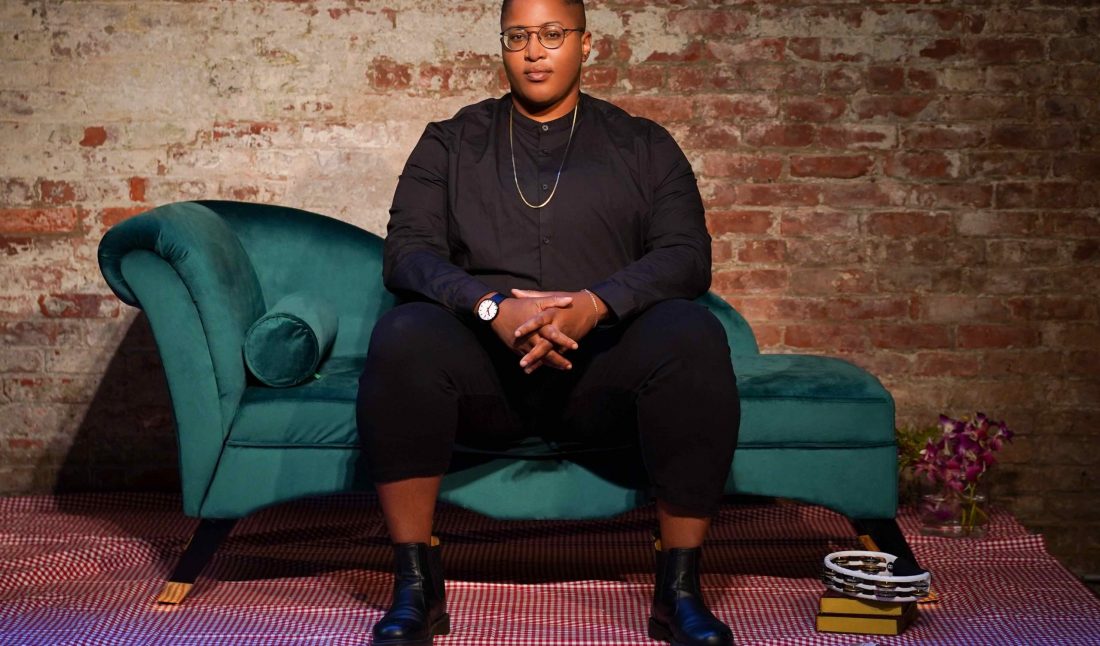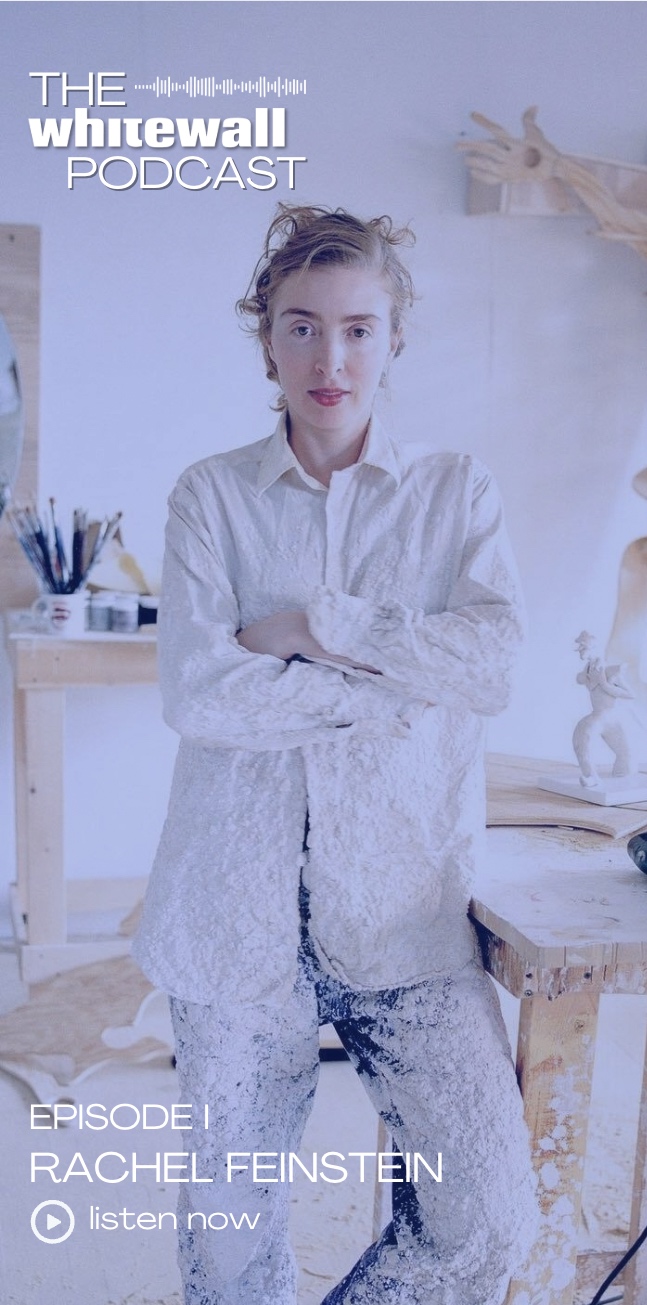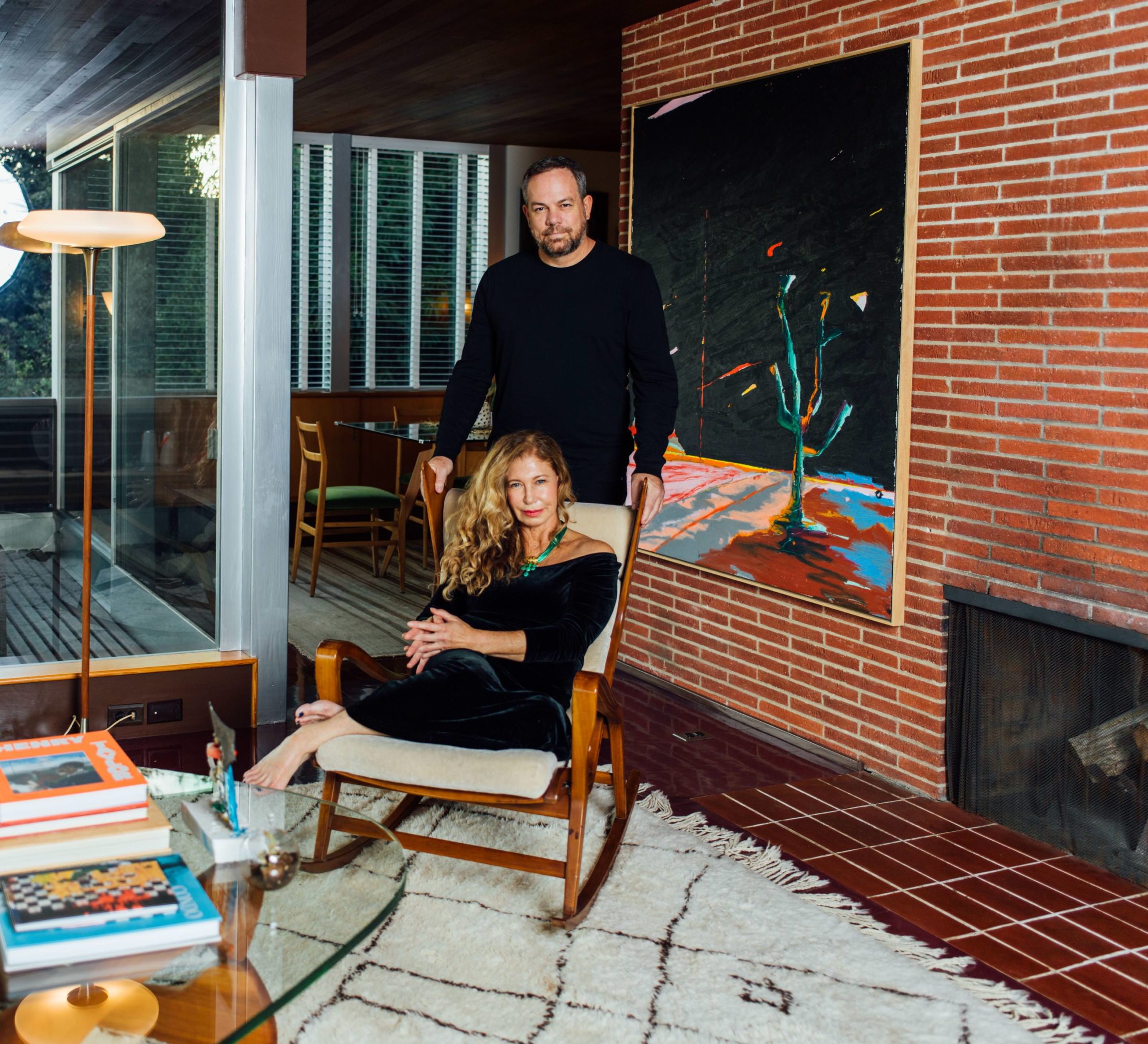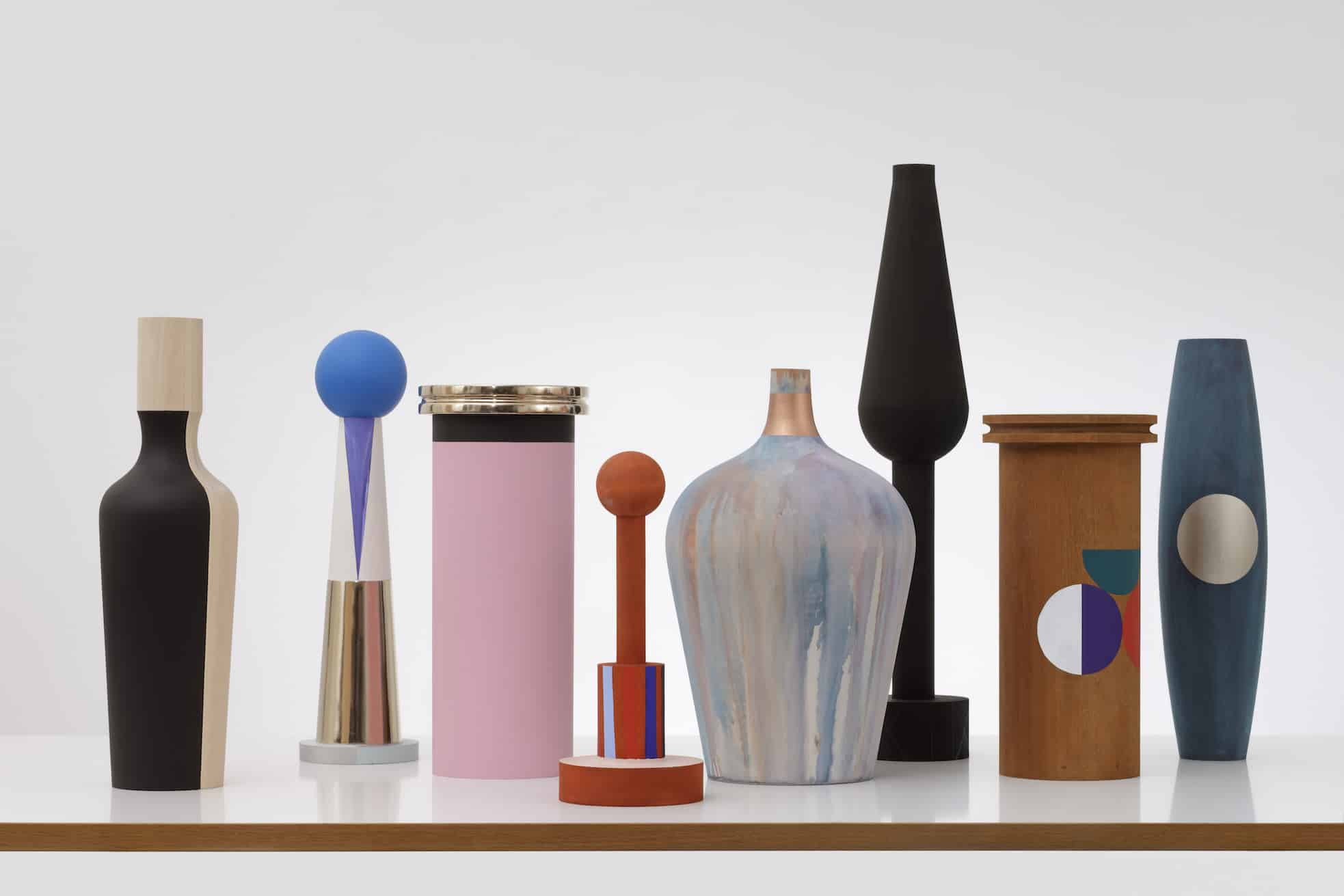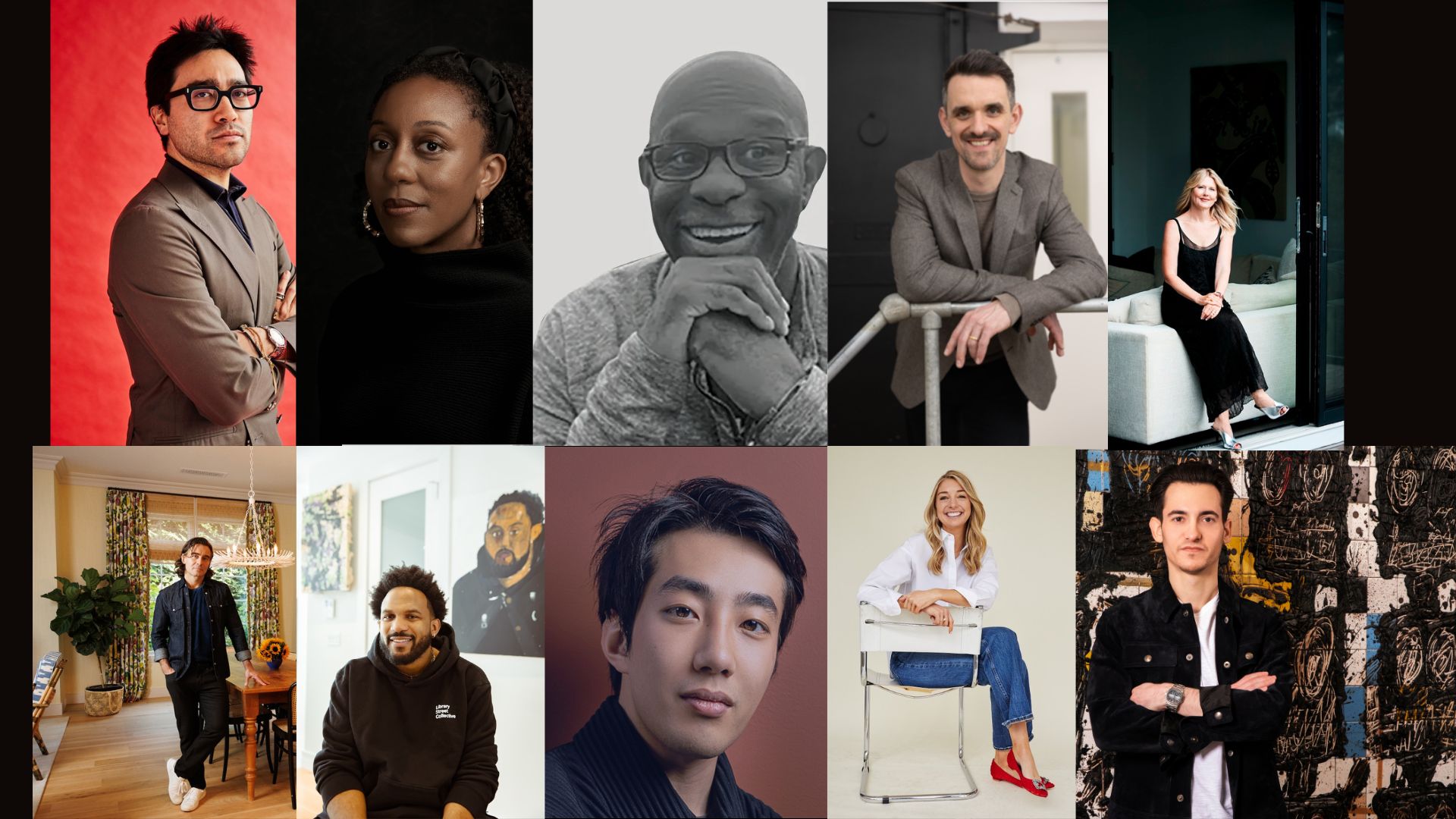sloan leo believes there is no design without community, and no purpose without justice. The designer and artist has spent over 15 years in the nonprofit sector in leadership roles at places like Dream Corps, Environmental Defense Fund, and The Trust for Public Land. They founded FLOX Studio Inc., a strategy and design firm with a strong sense of social impact through social practice art, education, and consulting.
This fall, their “A Watermelon for Leo” is on view at Pen + Brush in New York. The installation, open through December 11, explores the ideas of church, sacredness, and the environment. Whitewall spoke with leo about the personal inspiration behind the show, as well as what designing for community really looks like.
WHITEWALL: What was the starting point for “A Watermelon for Leo?”
SLOAN LEO: My exhibition is part of a show, “Isolation to Revolution / Rebirth to Dissent.” It was an invitation from the gallery to seven artists to reflect on what this year has been for them.
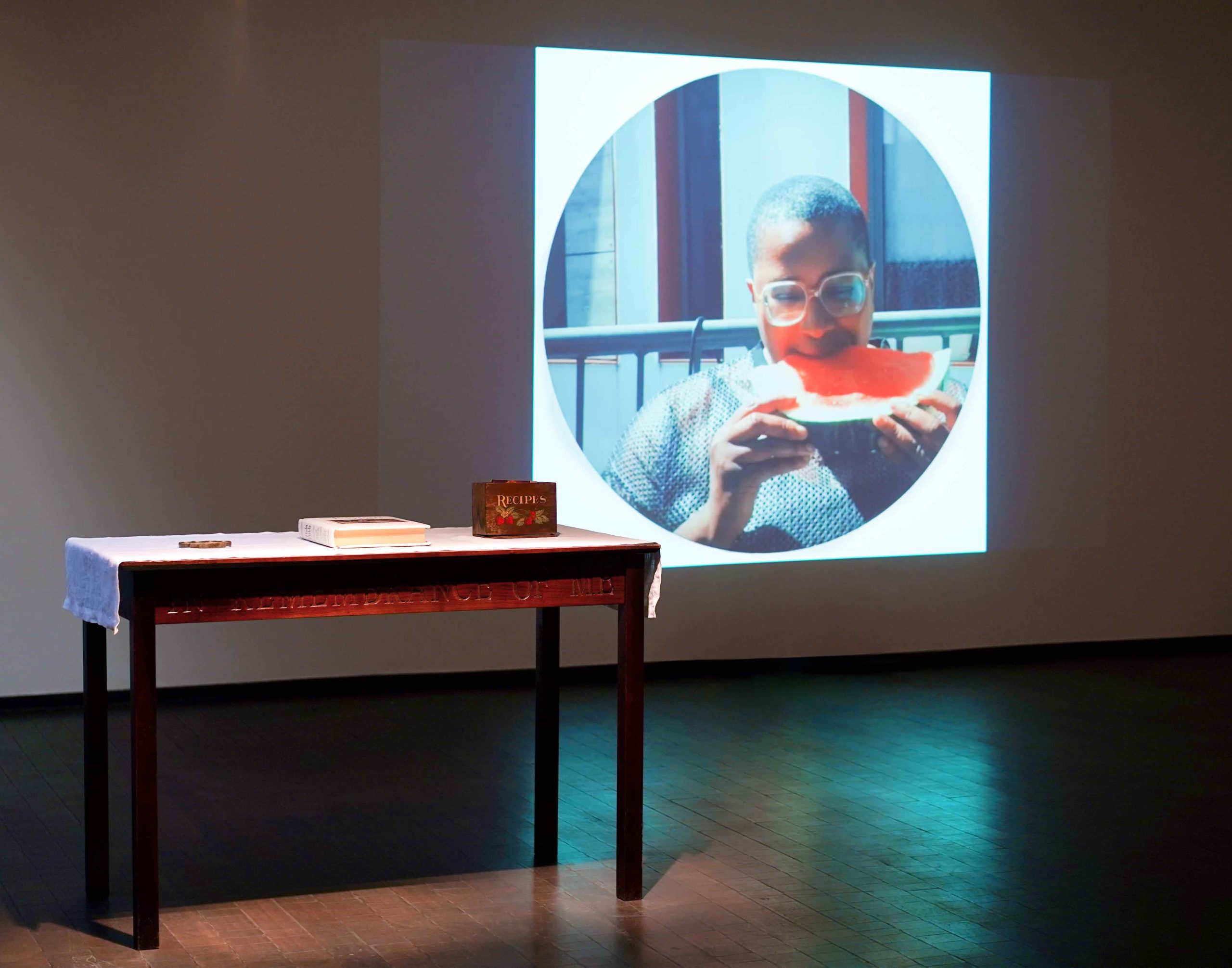 Installation view of sloan leo’s “A Watermelon for Leo” at Pen + Brush gallery, photographs by Julia Parris, courtesy of the artist.
Installation view of sloan leo’s “A Watermelon for Leo” at Pen + Brush gallery, photographs by Julia Parris, courtesy of the artist.
One day in June, I was sitting on my balcony after being alone for three months in the house, and I was like, “I need something to uplift me. I’m going to get a watermelon.” And I got the watermelon, and the sun was shining, and I was like, “I’m going to eat my watermelon on my balcony.” And I was like, “It’s so sad that I don’t want to eat watermelon in front of people. Why do I have this horrible racial shame?”
Upon doing some research I learned that in the late 1800s, early 1900s, after Black people were freed, watermelon became this symbol to Black people of freedom and joy. The folks in power didn’t want Black people to have the vote, and so they came up with a marketing campaign to smear the character of Black people, pointing out them eating watermelon in the sun with their friends, saying black people are lazy, feckless, messy, and not worthy of citizenship. So it became this trope that, to me, the depth of that thievery is something I feel in my bones. You steal a people and then you steal their joy. What a horrible thing to do.
I made a four-minute video called A Watermelon for Leo, shared it online, and then people started to comment. The gallery said, “We have this twelve-hundred-square-foot lower level and would love for you to build it as you wish.”
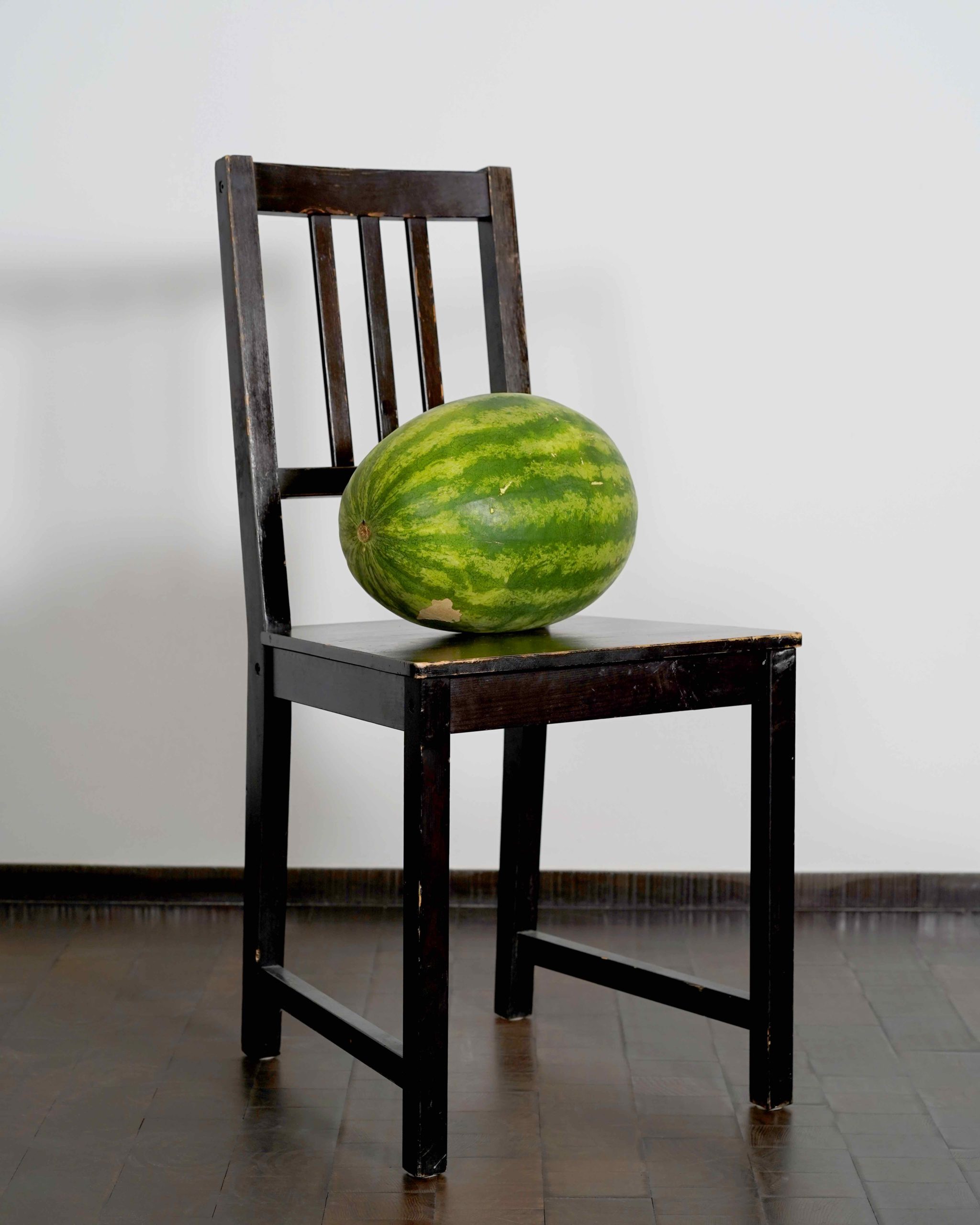 Installation view of sloan leo’s “A Watermelon for Leo” at Pen + Brush gallery, photographs by Julia Parris, courtesy of the artist.
Installation view of sloan leo’s “A Watermelon for Leo” at Pen + Brush gallery, photographs by Julia Parris, courtesy of the artist.
WW: What then did you want to do with that space?
SL: I wanted it to be a container of something sacred, so I left the space quite minimal in aesthetic and focused on highlighting the objects, the artifacts of my life, a few objects that I really treasured, and they are all from my grandparents. My grandmother’s recipe box from St. Matthew’s church in 1974, where women came together and typed up individual index cards. And my grandfather’s, who was a minister for 40 years, his study bible, this beautiful white leather bible that lived in his study desk in the basement, where he would prepare his sermons every night. And a dress from my grandmother.
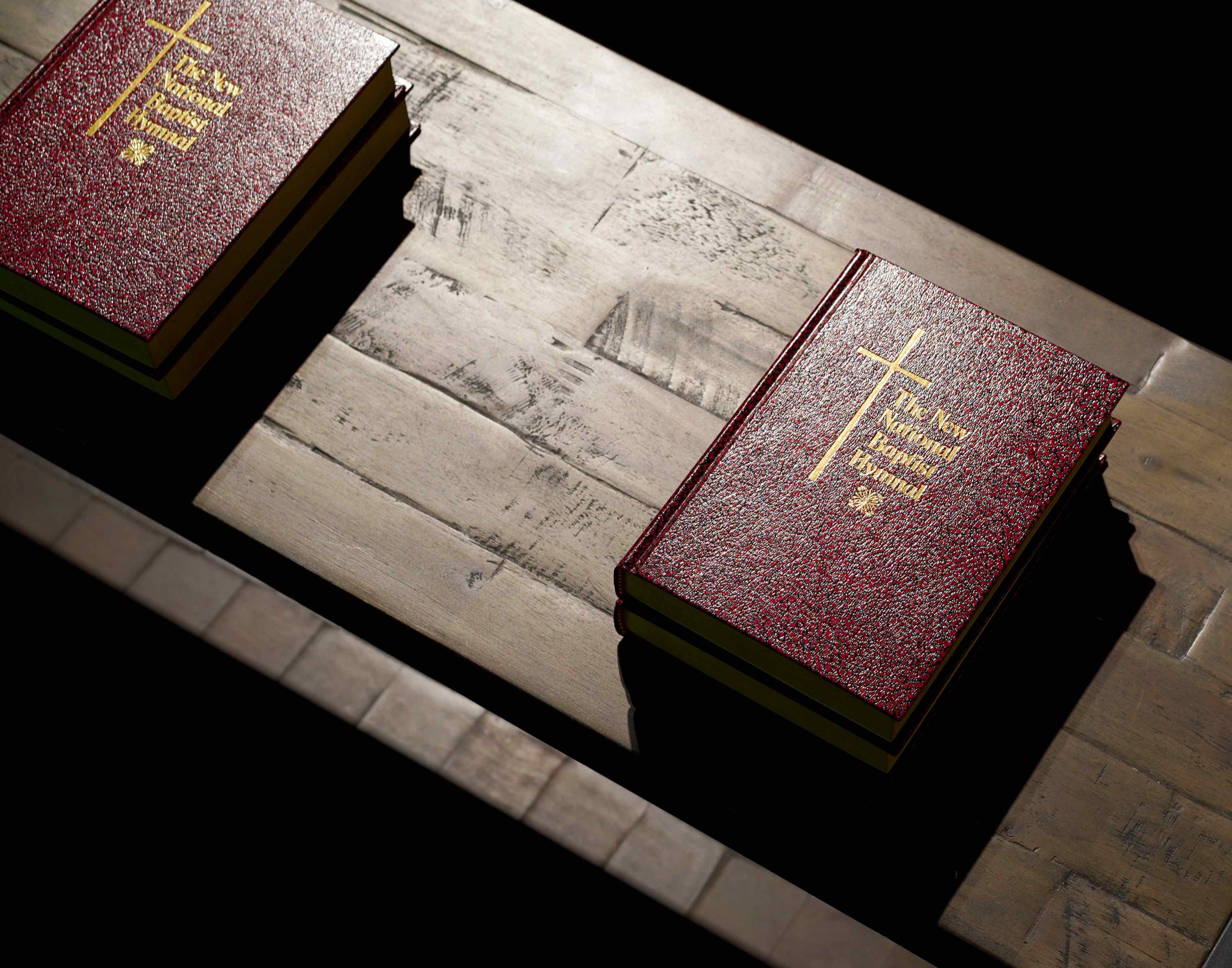 Installation view of sloan leo’s “A Watermelon for Leo” at Pen + Brush gallery, photographs by Julia Parris, courtesy of the artist.
Installation view of sloan leo’s “A Watermelon for Leo” at Pen + Brush gallery, photographs by Julia Parris, courtesy of the artist.
WW: How do you want visitors to move through the space?
SL: The way the space is laid out is there are several stations of the faith, because at its essence it is about faith and community as a tool to get us through. When you come in you are greeted, there is a church program, and then you’re welcomed by An Ode to Annie, which is the dress my mother gave me from my grandmother’s time when she was still hosting church events as the first lady of the church. And I got it when I was in my twenties and still very thin and very feminine, and so that dress became the dress I hosted events in.
There is a station with some photos of my grandfather, my grandmother, and I in front of hymnals I grew up with. Then there is the video. And then there is the milk-washing ritual. At the end of every summer my grandmother and I would wash the plants in her sunroom. She would give me a little bit of milk and water. On the way out of the installation you take a rag and a little bit of milk and wipe a leaf and reflect and find your way out. It’s like a full church service but in a minimal way with just the right pieces to go with the depth that the story has.
WW: While faith can be complicated for many, at the core of it is community—and especially in this moment it’s so precious.
SL: Yes. I’ve worked in the social sector for my entire career, and community was always this placeholder for low income and Black people. And now David Brooks last year was like, community, interdependence, it matters, and people are like, “Right!”
The show is both acknowledging the constraints that I felt growing up as a Black queer person who was not normative, and still not, but also finding my own story in that one that feels flexible and that felt really important. As a masculine-presenting queer person, I didn’t see a lot of me ever growing up. I still don’t see enough of me and people like me. But I wanted to signal that community is something that you need to be a beacon for, not just that you look for. I was looking for people like me, and I can help people find me, and maybe we don’t look the same but we share some value and we share some humanity.
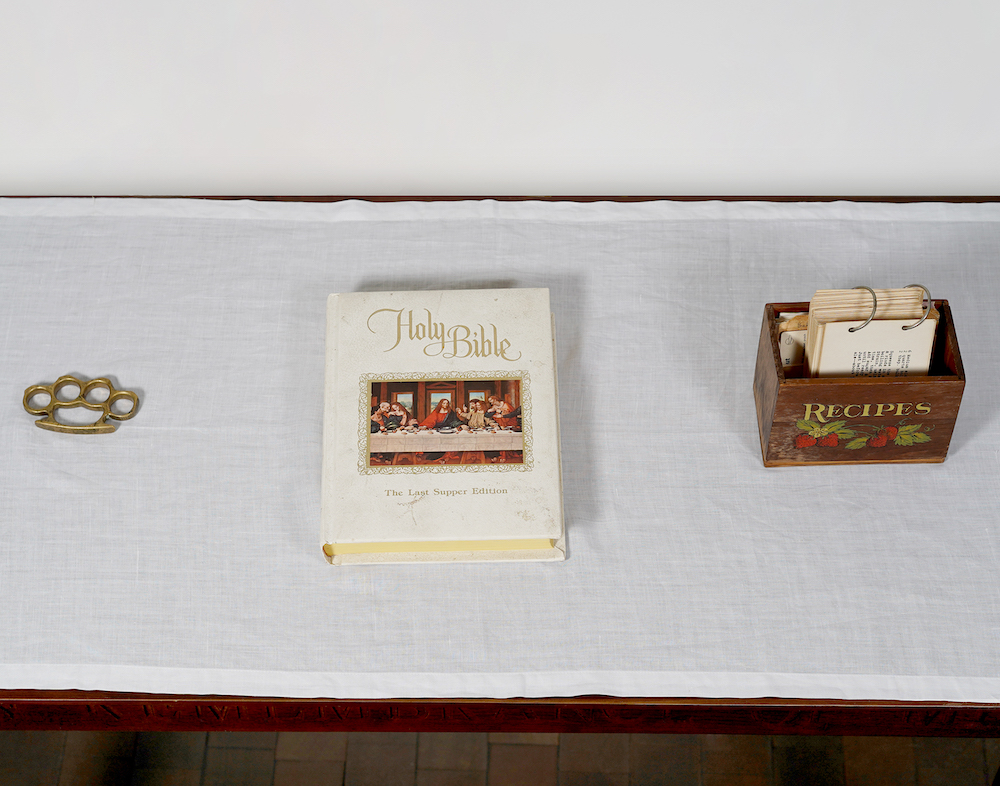 Installation view of sloan leo’s “A Watermelon for Leo” at Pen + Brush gallery, photographs by Julia Parris, courtesy of the artist.
Installation view of sloan leo’s “A Watermelon for Leo” at Pen + Brush gallery, photographs by Julia Parris, courtesy of the artist.
WW: How do you see your artistic practice in relation to your design practice?
SL: I think of myself, and I’ve been referred to as a social practice artist because I do create for conversation with community.
I really came to design because I was frustrated and I felt like there have got to be better ways to do this work together. What I realized is that people come to the social sector because they want to be with people to create change together. Which is what I thought church was for growing up. So I do look at nonprofits and social work as a type of faith. And I was like, “I have the faith that there is a better way that we can work together.”
I found community design, which is from the sixties and seventies, which is about building collective capacity in power and not about a designer or consultant coming in and telling you what to do. It’s asking the right questions that reveal where people want to go, where there is alignment. I want us to have the best social impact institutions we can, which requires doing work to deconstruct existing power dynamics between board and staff, volunteers and staff, even executive teams on their own.







